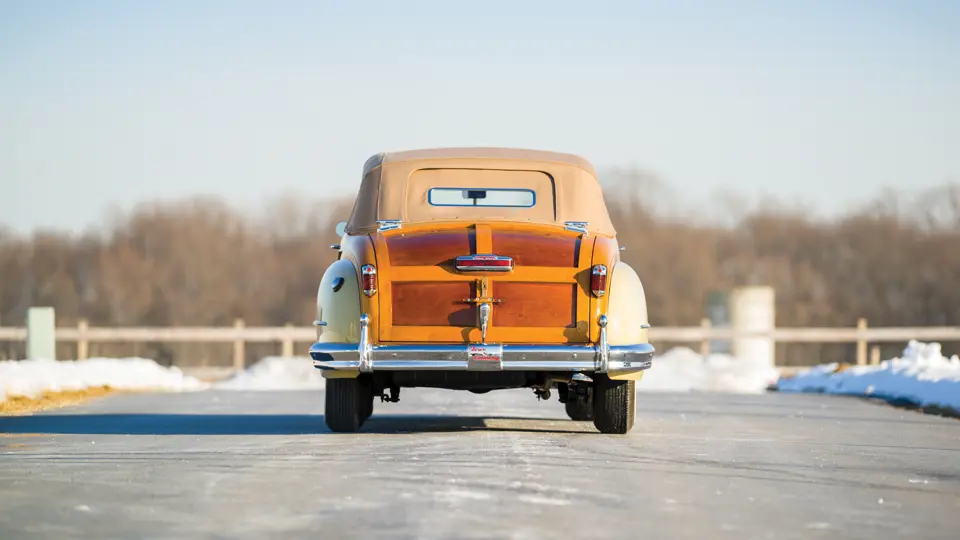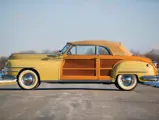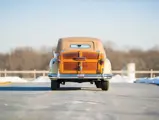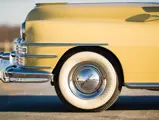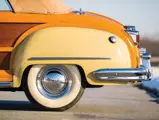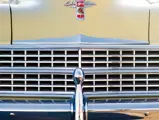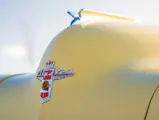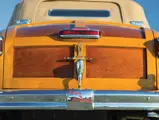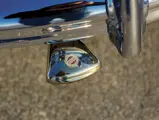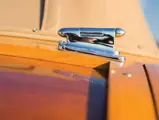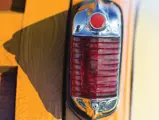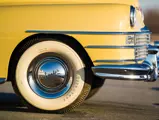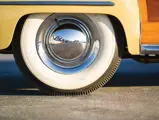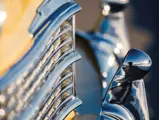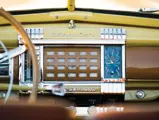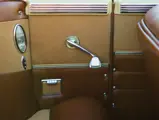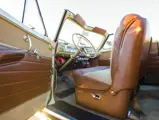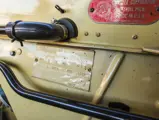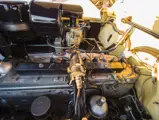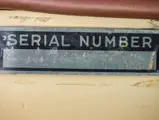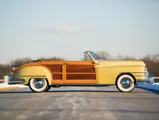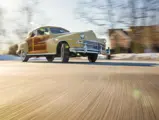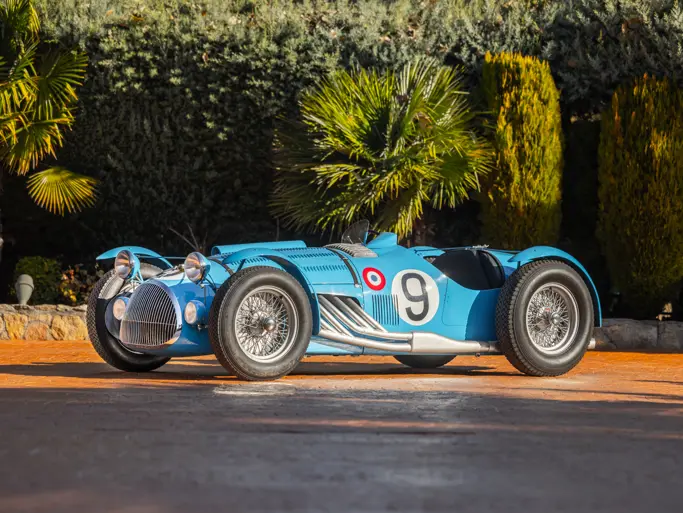Model C-39. 135 bhp, 323.5 cu. in. L-head eight-cylinder engine, Fluid Drive with Prestomatic four-speed semi-automatic transmission, independent coil spring front suspension, live rear axle with semi-elliptical leaf springs, and four-wheel hydraulic drum brakes. Wheelbase: 127.5 in.
The first Chrysler Town and Country was a wood-bodied, barrel-back sedan in the 1941 six-cylinder Royal line. Neither sedan nor station wagon, it had a fastback profile with twin hinged “barn doors” at the rear.
In contrast to most wood-bodied utility vehicles, the new Town and Country Car, as the company initially called it, had lavishly varnished wood inside and quality upholstery.
Chrysler Corporation General Manager David Wallace believed that an upscale production-based automobile would attract wealthy buyers to Chrysler showrooms. He desired a sophisticated automobile, one elegant enough for city and chauffeur driving, yet sufficiently utilitarian for country living. Wallace envisioned a wood-bodied car with the same basic lines as contemporary Chrysler steel-bodied sedans, yet with greater refinement, quality, and panache. The cars were constructed in the manner of pre-war station wagons, using structural wood of white ash with contrasting panels of rich Honduran mahogany. The wooden parts were supplied by Pekin Wood Products of Helena, Arkansas, and were shipped to Chrysler’s Jefferson Street Plant in Detroit for final assembly. The roof, however, was solid steel. Nearly 2,000 were built, in 1941 and into the short 1942 model year.
The response was such that an expanded range of five body styles was planned for 1946, but in the end, only a conventional trunk-back sedan and an eight-cylinder convertible coupe were built. Just 100 long-wheelbase eight-cylinder sedans were made, the rest being six-cylinder cars on the shorter Windsor wheelbase.
Built on the New Yorker’s 127.5-inch wheelbase, the convertible was longer than the sedan. It also had all the New Yorker standard equipment: five-main-bearing 135 brake horsepower straight-eight engine, Prestomatic Fluid Drive transmission, and an electric clock.
Annual production totals were not recorded, but for the 1946 through 1948 model years, 8,368 New Yorker Town and Country convertibles were built.
The new-design second-series 1949 line dropped the Town and Country sedan, and for 1950 the model retreated to an eight-cylinder hardtop coupe with painted metal insert panels. Thereafter, the name “Town and Country” graced a long succession of Chrysler steel-bodied station wagons and minivans.
The car being offered was purchased from a fastidious collector in the Midwest. Although it has been repainted in correct Yellow Lustre and has benefited from re-plating some of the brightwork, it has entirely original wood. The body has never been apart, just meticulously maintained, yet it is difficult to discern from new.
In addition to the Prestomatic transmission and dashboard clock, it is equipped with a radio, heater-defroster, dual cowl-mounted side mirrors, driver’s side spotlight, exhaust extension, seatbelts, factory wheel covers, wide whitewall tires, and center bumper guard. It also has a power-operated top, the fabric of which is tan canvas. It comes with a top boot custom made for the current owner by well-known restorer Al Prueitt in Glen Rock, Pennsylvania.
The mileage shown is 44,000, believed correct. The car runs and drives superbly and will be a welcome addition to any collection.

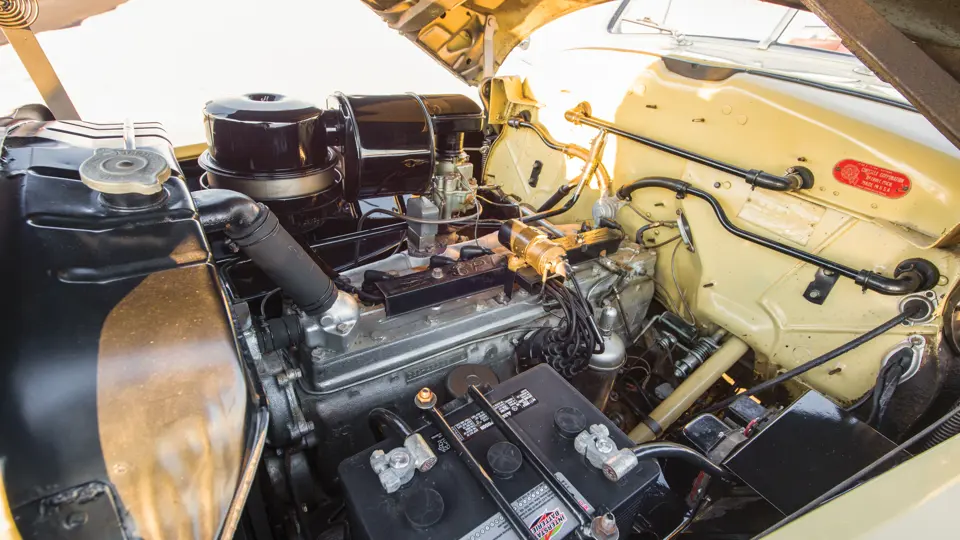


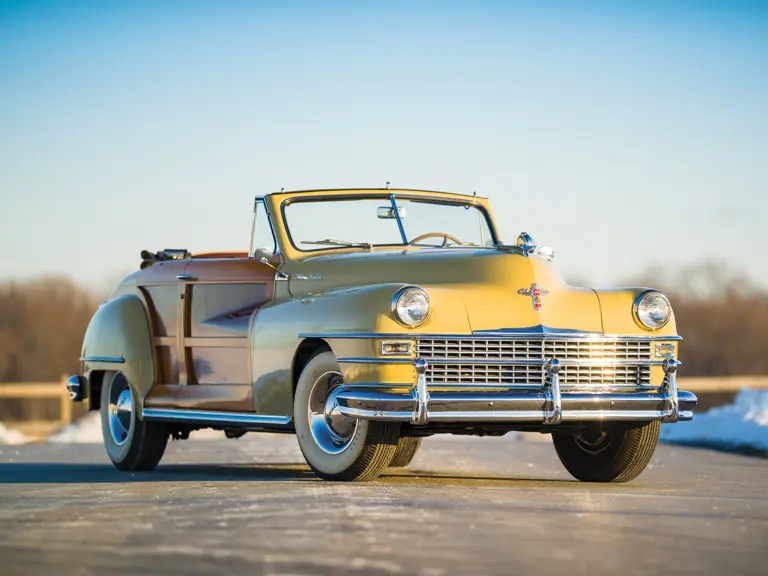
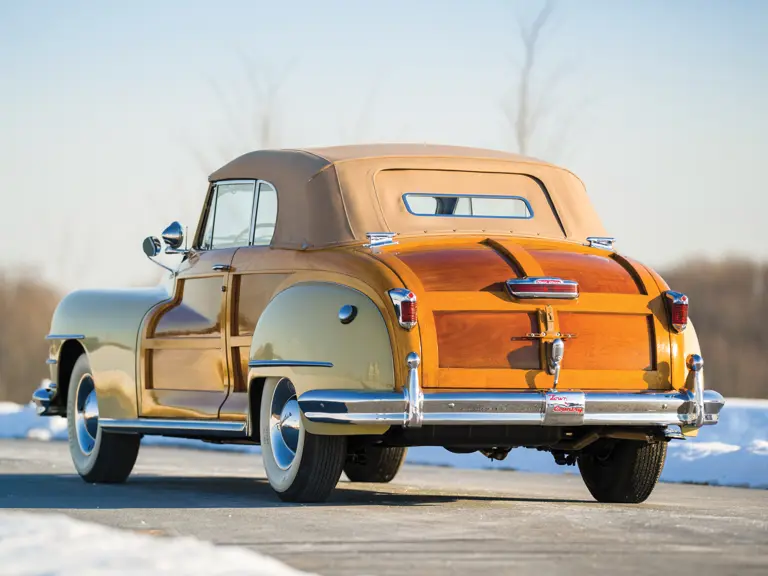
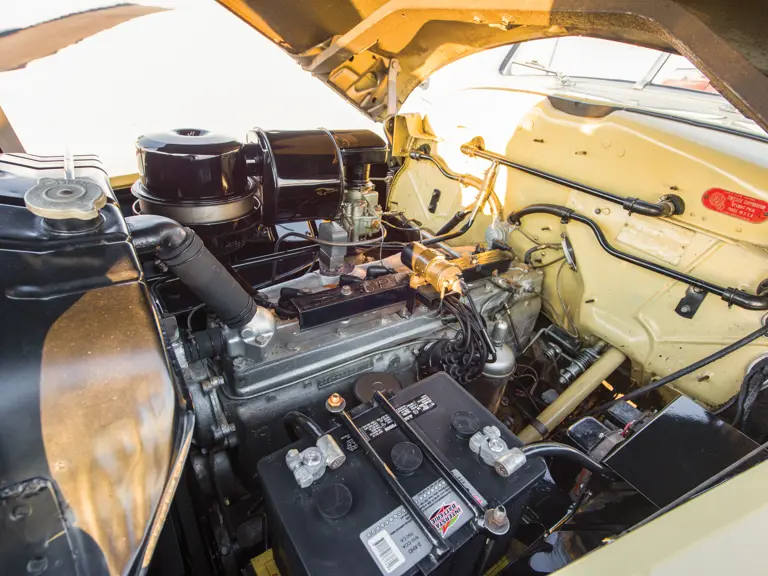
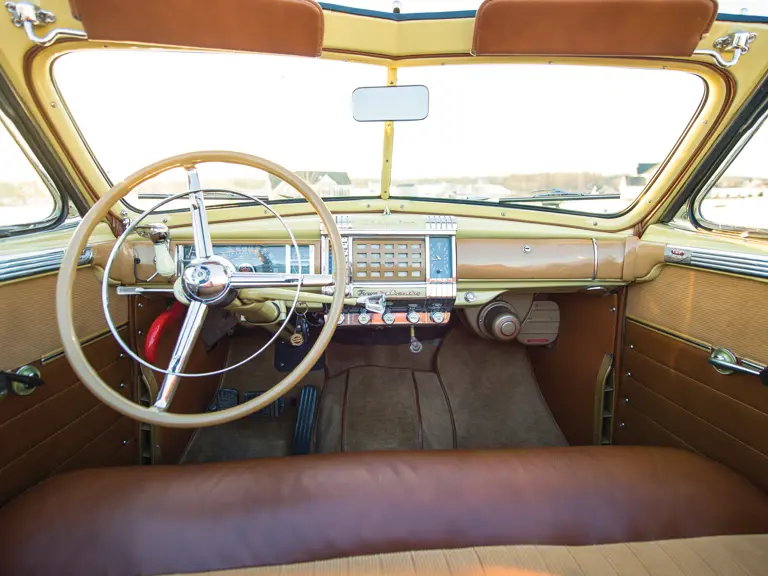
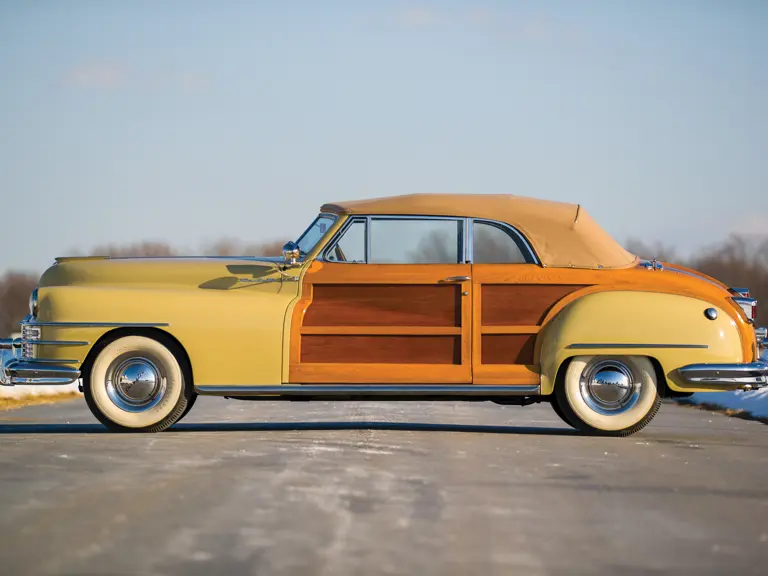
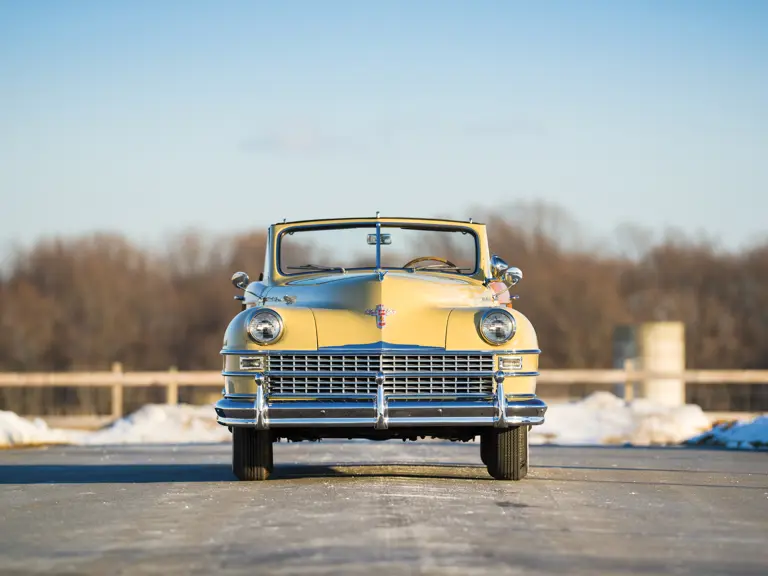
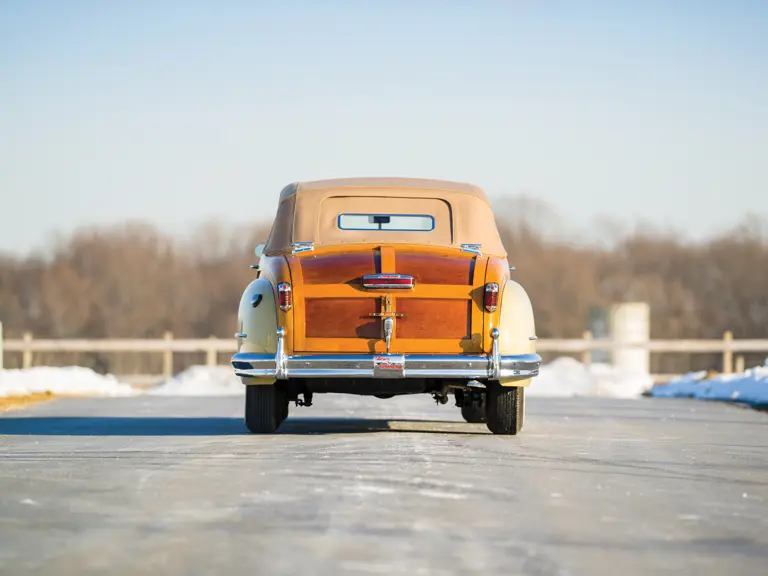
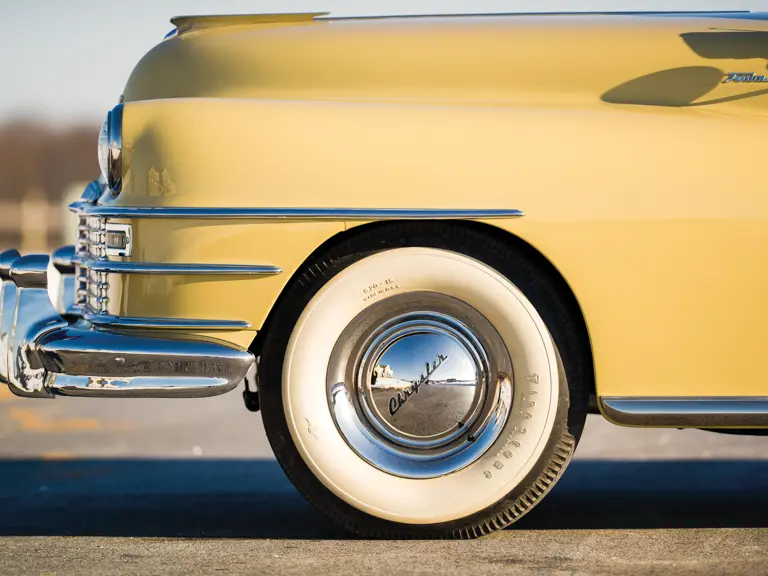

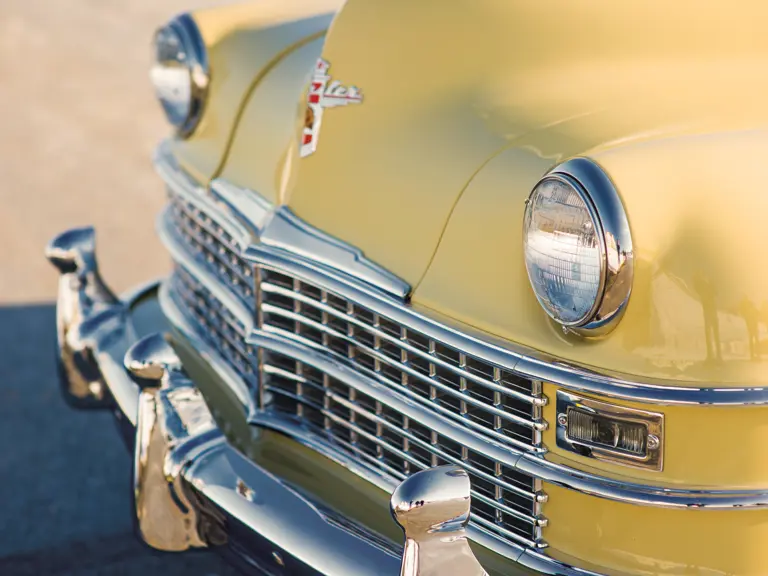


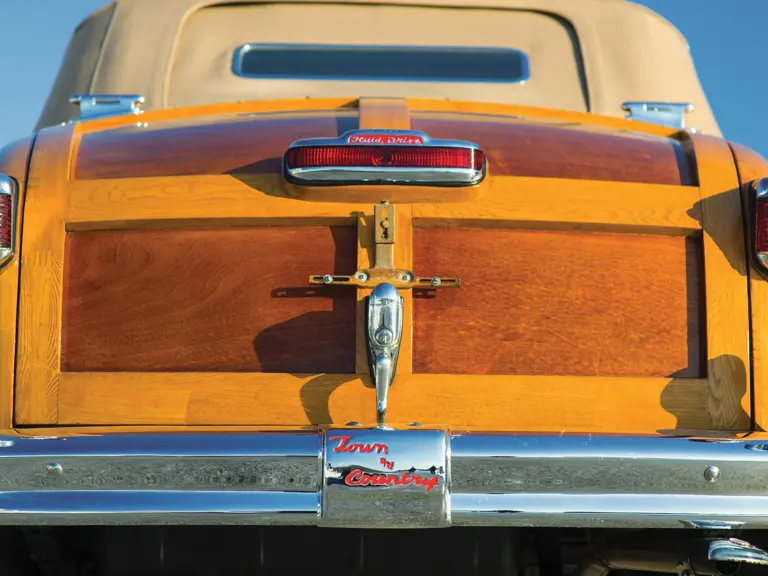
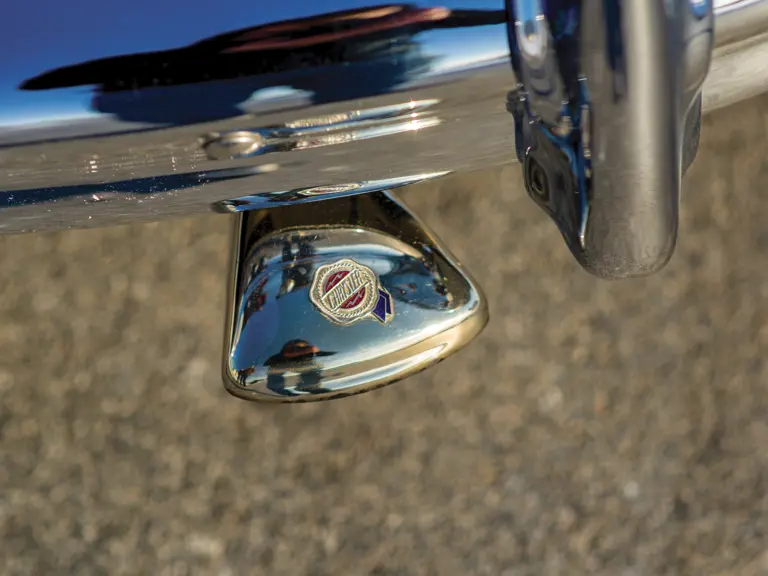

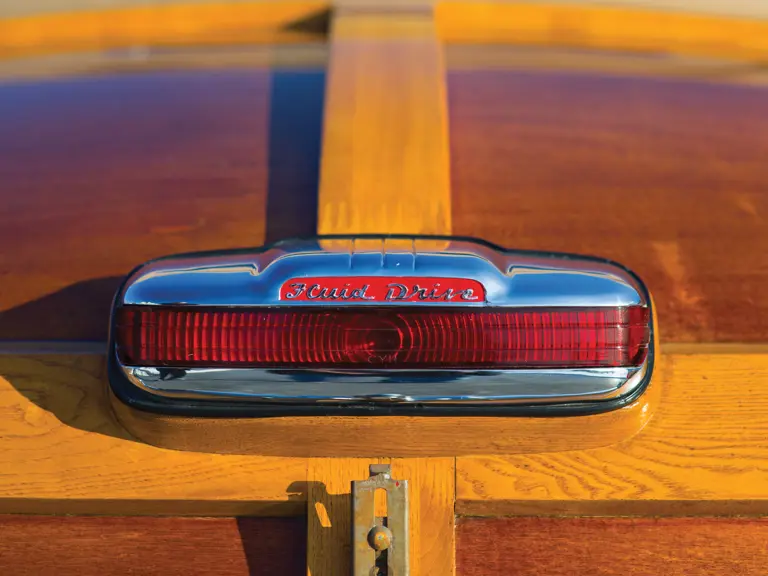


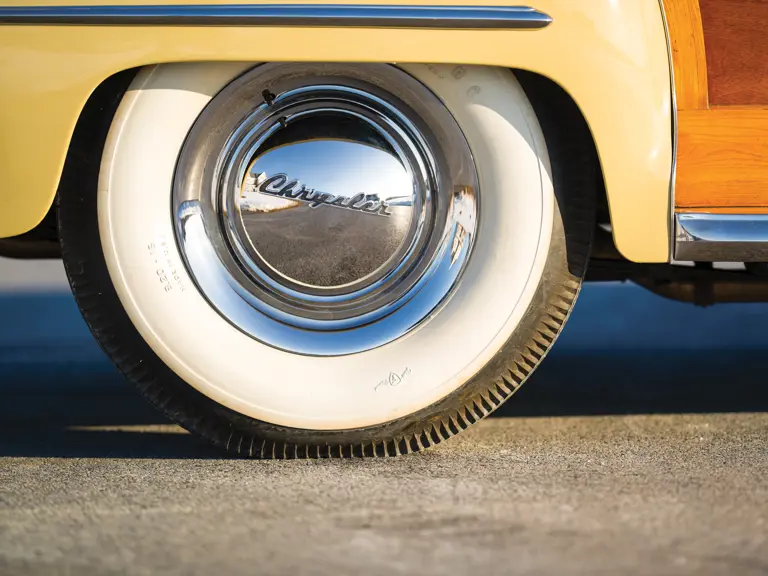
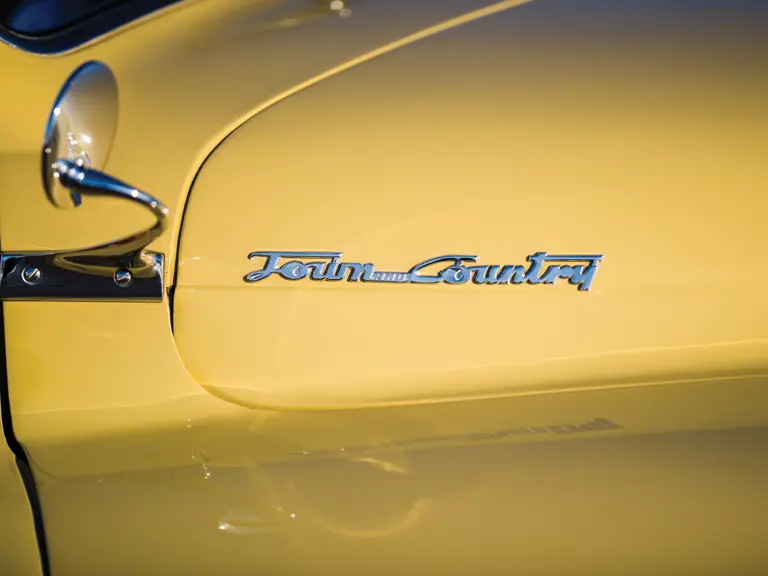

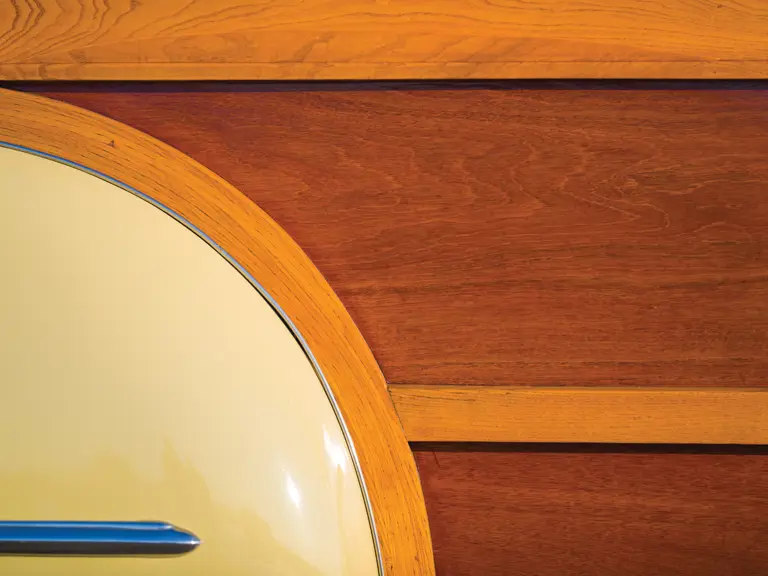
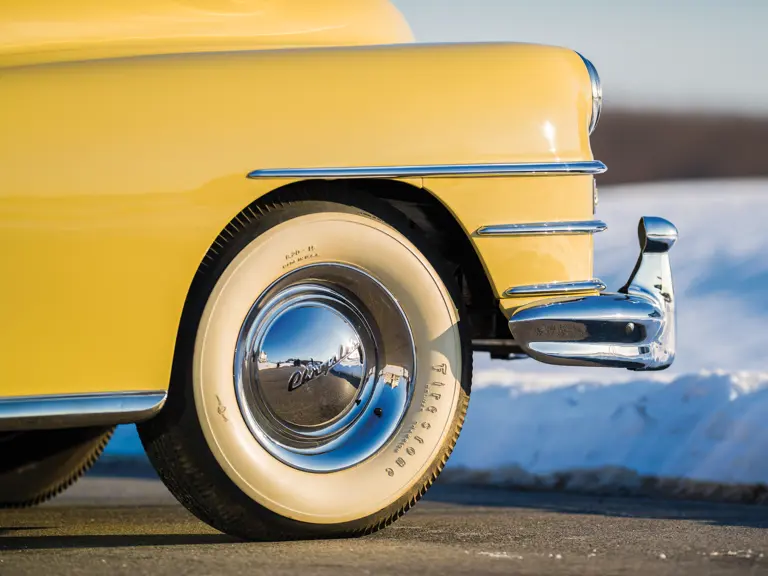

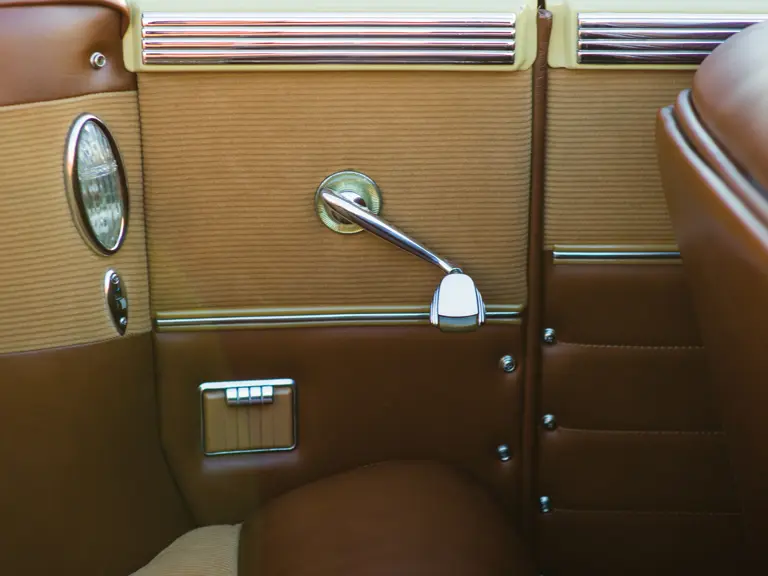
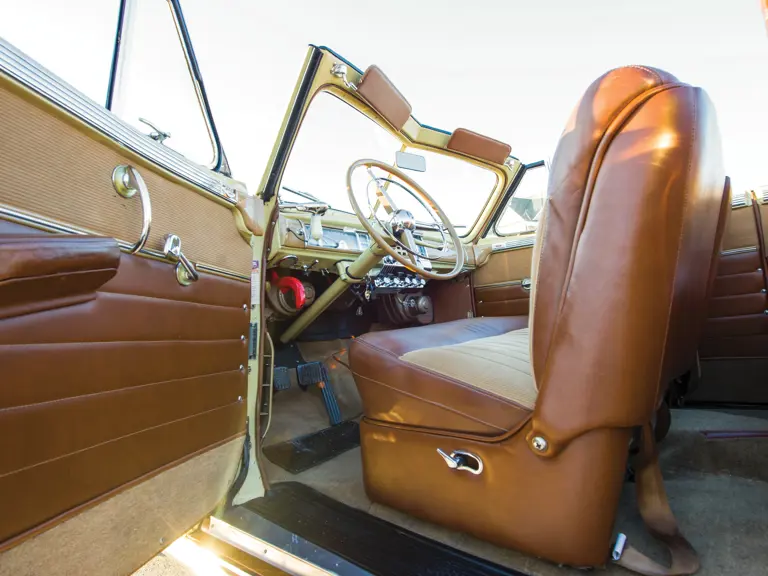
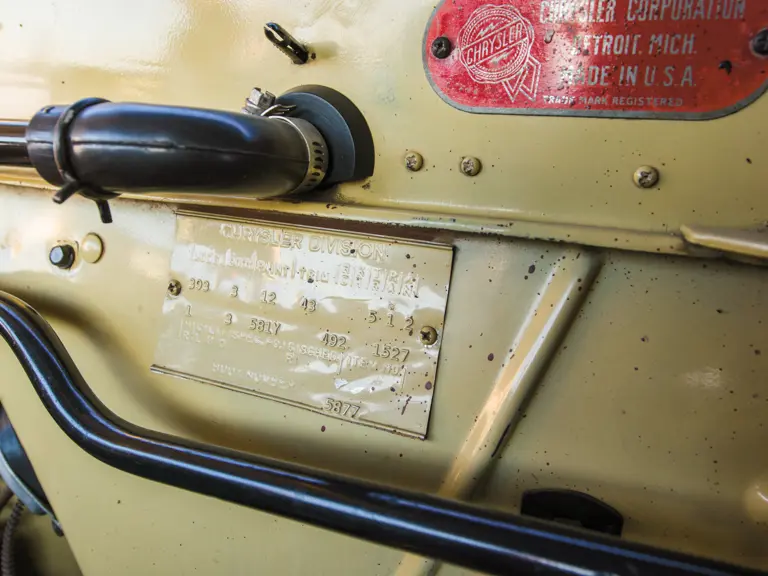
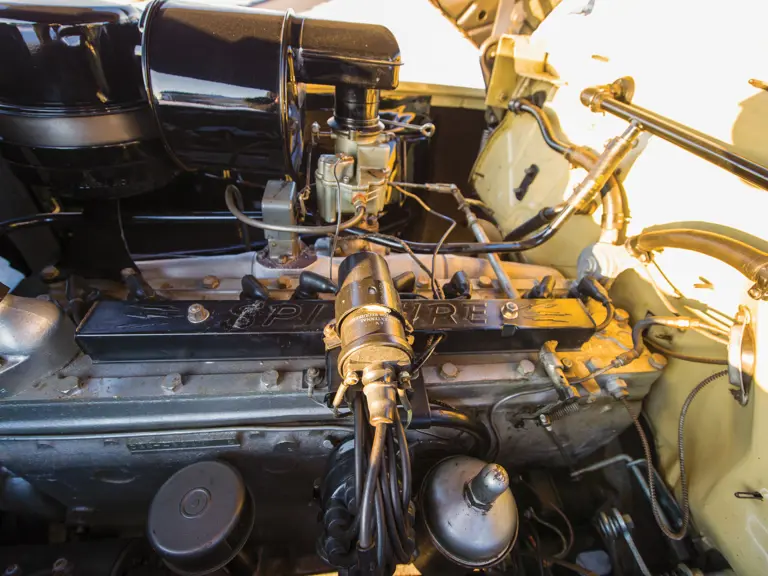

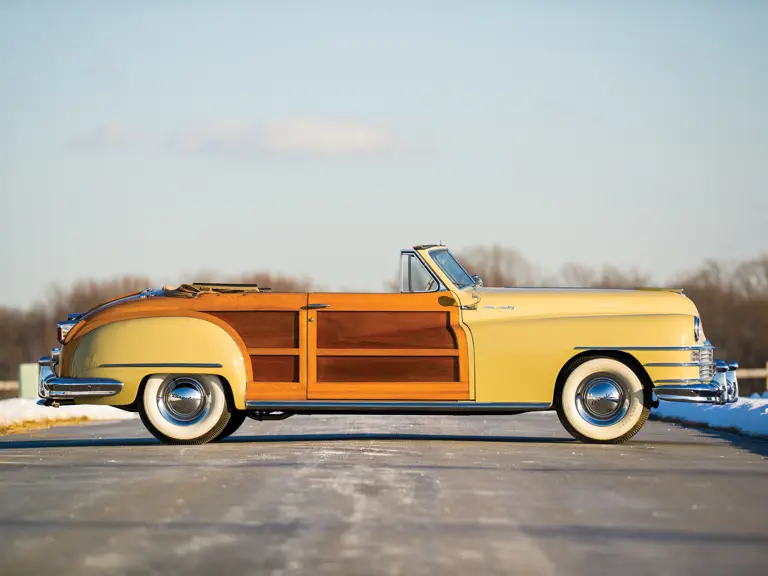
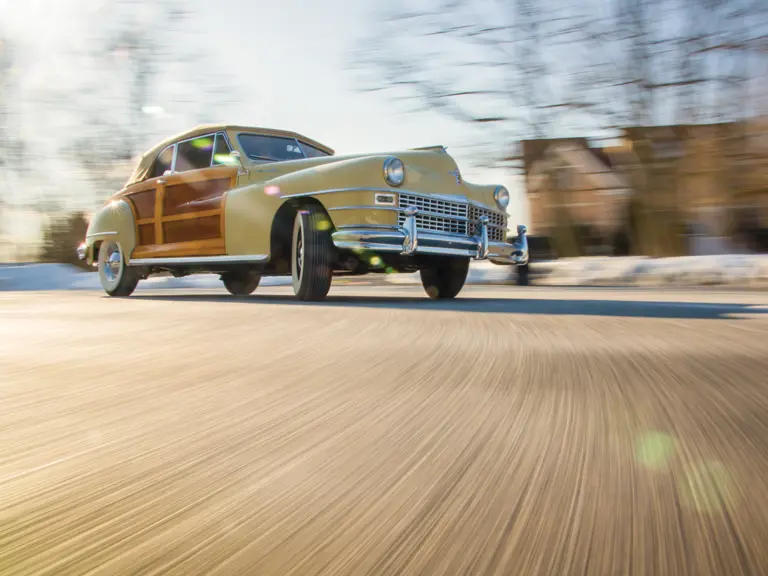
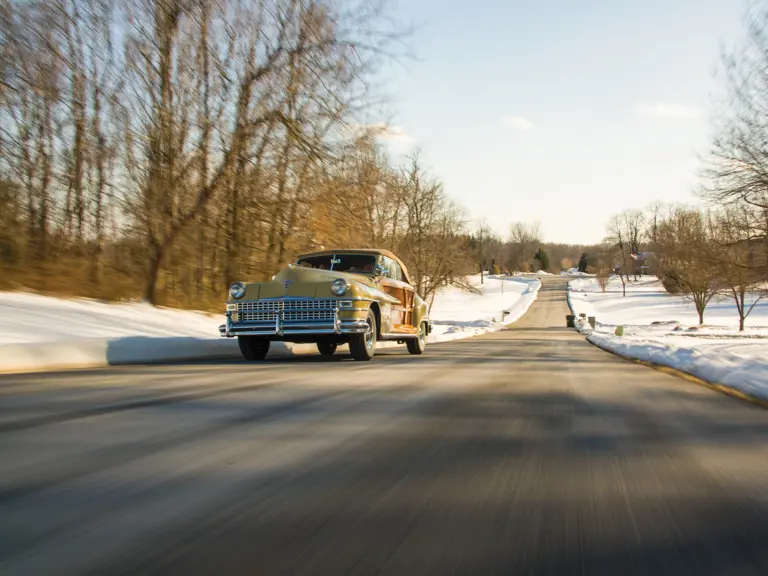
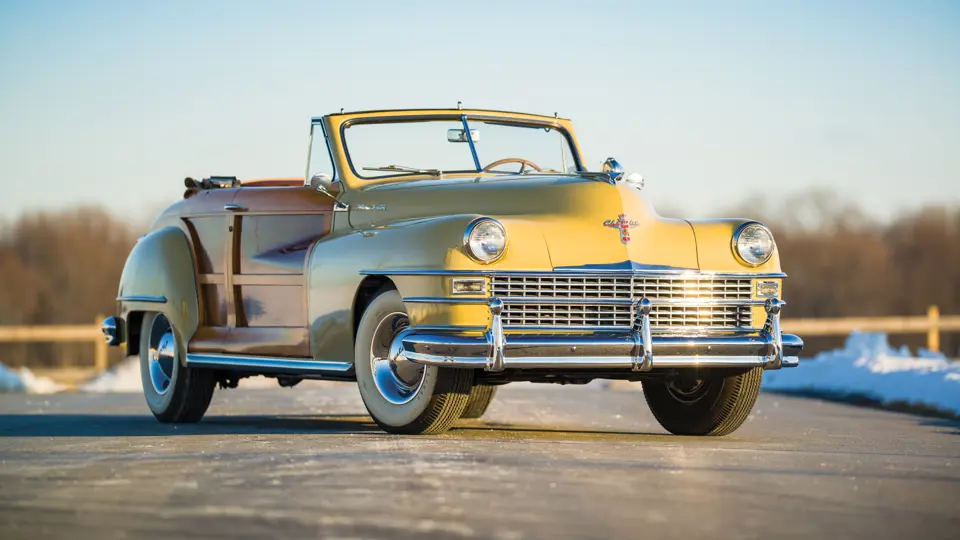
 | Amelia Island, Florida
| Amelia Island, Florida


